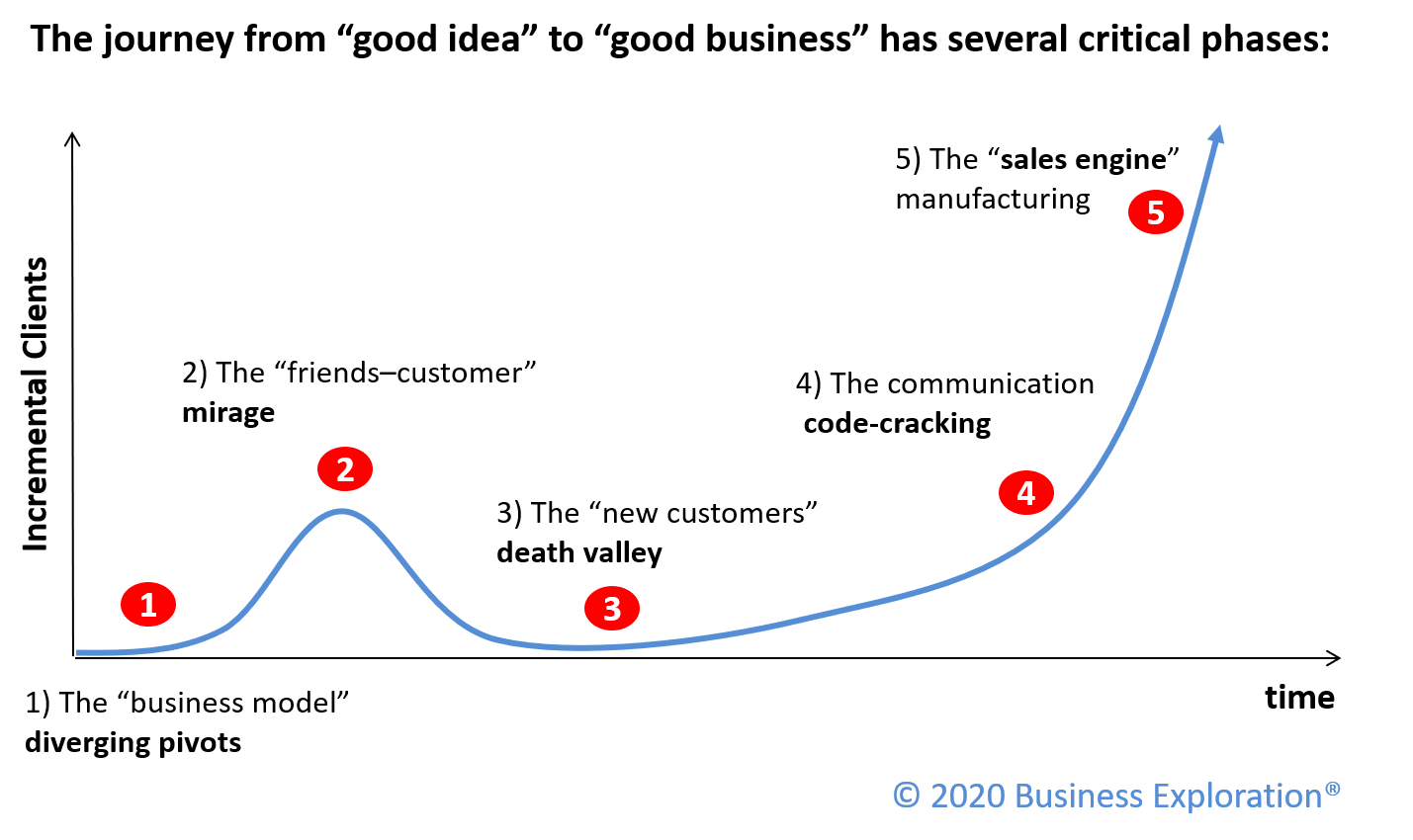
How to launch new high-tech products and services?
In my more than two decades long journey supporting entrepreneurs and innovators go-to-market efforts,
I have repeatedly encountered some critical cross points, where businesses struggle to move forward.
This is a list of the most common.
Now that you know them, skip them.
Flavio

The tipical success journey of an innovation sees 5 phases. Most of the time this success journey is built on a massive dose of work and luck. The Entrepreuner has fund his way by trial and errors, and cannot re-produce it for another business venture.
Most of the times the journey ends abruptly in one of these steps. The ratio of success vs failure of well funded initiatives I estimated to be around 1 in 100. But I suspect it is worst. Nobody talks happely about failure, and I had a very hard time pulling together the data to build this ratio.
This cross point it’s where initial ideas fail to converge to a good enough business model.
Most of the times the team tries to handle an overreaching complexity,
having on one hand a deep understanding of field domain know-how,
and in the other a just approximate experience in general management and market scenarios development.
The result is the inability to find a backbone organization model to support consistent growth,
and, ultimately, they end up running out of cash.
If the idea finds easily appreciation among the proximity network made of
friends, acquaintance and personal estimators,
the team can reach a momentous omnipotence feeling,
with the risk of forgetting to take advantage of the lucky moment, to build a proper sales model.
It’s the risk of misinterpreting personal branding with “exceptionally good ideas that self-promote”
Failing to build a repeatable sales process, the “friend-customers” honeymoon will soon end
depleting all personal branding business opportunities.
The “cash-strapped” wolf will soon accompany the team’s crossing of the “new customers” death valley.
No Customers will appear on the horizon, until the full run-out of resources
or the arrival on a promise land. I.e. reaching a point where (admittedly: by luck and trial & error)
the sales code to intercept customer’s attention is found.
The promise land is almost always made of two ingredients:
The first is necessary to receive enough resources to exit the death valley track.
The second is that magic moment when the team gets the key words to pull customer’s attention.
If it wasn’t for the almost total mess made to get that key words,
the team should be allowed to celebrate…
The teams that starved through all the 4 previous phases,
but succeeded in cracking the code,
have finally the chance to rethink their go to market.
The business idea is there, the team is there, the operational processes are there,
even the communication is in its embryonic form, but it’s there.
Now it’s the turn of making repeatable sales really r-e-p-e-a-t-i-b-l-e.
Here much of the complexity of the original solution has gone,
so the level 1 of Sales engine process is almost always at reach.
Building a commercial network and beating the bush is something that makes orders fly...
But what a fatigue!
Almost always these problems are cascade generated by a trial and error approach, instead by a good planning of experiments. ( yes, experiment and trial are not the same thing…)
The entrepreneur tries to take care of the critical joint between the technology side and the market side of their business model, adding a layer of “go to market” complexity to the already complex layer of “technology development”.
And if the second is often a sound domain of knowledge, the first, is more than often a “debut” without parashute.
Joining a business community, a lab, an incubator, could be a first step to learn from the ones that -avoided the mistake- before you.
The second may be to get professional help from a coach:
